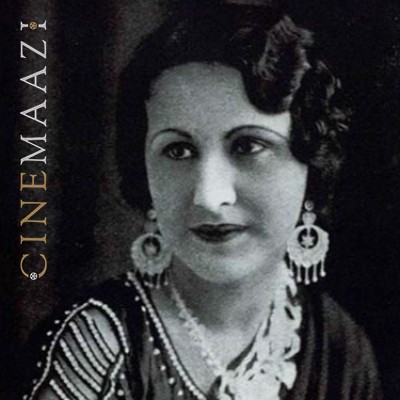Agha Hashar Kashmiri
Subscribe to read full article
This section is for paid subscribers only. Our subscription is only $37/- for one full year.
You get unlimited access to all paid section and features on the website with this subscription.
Not ready for a full subscription?
You can access this article for $2 , and have it saved to your account for one year.
- Real Name: Mohammad Shah Agha
- Born: 3 April 1879 (Varanasi, Uttar Pradesh)
- Died: 28 April 1935 (Lahore, Pakistan)
- Primary Cinema: Hindi
- Spouse: Mukhtar Begum
Agha Hashr Kashmiri’s name finds mention among revered names like Dadasaheb Phalke and Ardeshir Irani as one of those who laid the foundations for Indian cinema. A pioneer of his time, Agha Hashr Kashmiri introduced a mode of screenwriting that continued to be the dominant template for film-writers in Indian cinema for years to come.
Gani Shah Agha, his father, a businessman whose main product was shawls, moved from Srinagar to Varanasi before Agha was born. Born on 3 April, 1879, Agha was christened Sayyad Mohammad Shah Agha at birth. When he was 17 years old, he first encountered one of the finest travelling theatre companies of the time, Alfred Theatres, which specialised in Parsi theatre.
At a time before the advent of the cinematic medium, Parsi theatre was one of the most popular forms of public entertainment. From his very first exposure to the charms of Parsi theatre, Agha was enchanted. He became so involved in his love for the theatre that he soon composed a play and sent it for review to the Alfred Theatre Company. This first attempt was dismissed by the Company, but the young Agha was not easily discouraged.
Taught Arabic, Farsi and Urdu at home, and Hindi and English at the Jainarayan High School in Varanasi, Agha was proficient in many languages. He delved deep into whatever plays he could find in all of these languages, while continuing to practice his own skills. By the age of 22, he could hold himself in no longer, and found himself on the doorstep of Alfred Theatres in Mumbai the same year. Armed with his personable physique and his clear pronounciation, Agha secured work as a playwright at the company. Soon, he started writing plays under the pseudonym Hashr Kashmiri.
His first play for the company was an adaptation of Shakespeare’s A Winter’s Tale, titled Mureed-e-Shak. He continued to pen plays like Sar-e-Steen and Meethi Chhnuri over the next few years, but it was with Aseer-e-Hars that he gained acclaim across the subcontinent. Wherever the Alfred Theatre company travelled, this last became an essential part of their repertoire. A few years later, Agha Hashr travelled to Kolkata from Mumbai, and joined Madan Theatres as one of their reputed playwrights. Here, he modified his writing style significantly to suit his audience. It was this style that was prominently used as a template for Indian cinema. As soon as films started being made, his plays converted directly into movies. Film scripts were often written based on his scripts for plays as well.
With the technological innovations that allowed the advent of talkies in Indian cinema, the demand for Agha and his myriad talents only rose to further heights. His renown was such that film scripts written by him were marked for success even before their release. Films like Shirin Farhad (1932), Aurat Ka Pyaar (1933), Aatashi Toofaan (1933), Yahudi Ki Ladki (1933) and Kismet Ka Shikar (1934) owed their success to his lyrics, his dialogues, or his screenwriting. His quintessential mix of Hindi and Urdu held a unique appeal for audiences across the subcontinent, and continued to define the way in which films were written for decades to come.
During his long involvement with the theatre, Agha Hashr also started directing plays. Spurred by his immense success in the world of cinema, he also established his own film company under the banner Hashr Pictures. A lover of the arts up until the very moment of passing, Agha Hashr met his demise during the shooting of a film in Lahore on 28 April, 1935.







.jpg)



